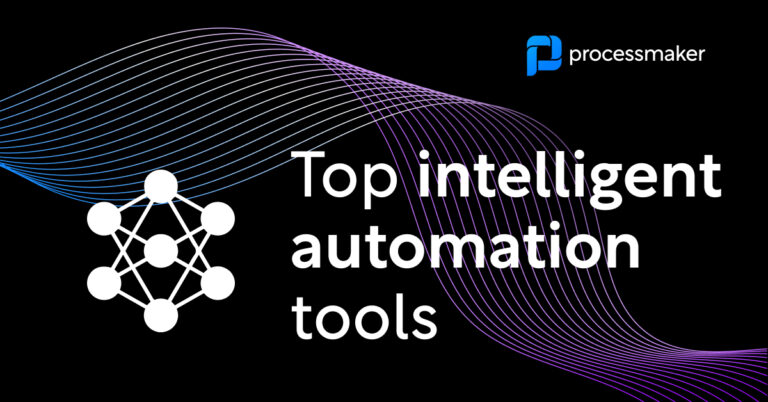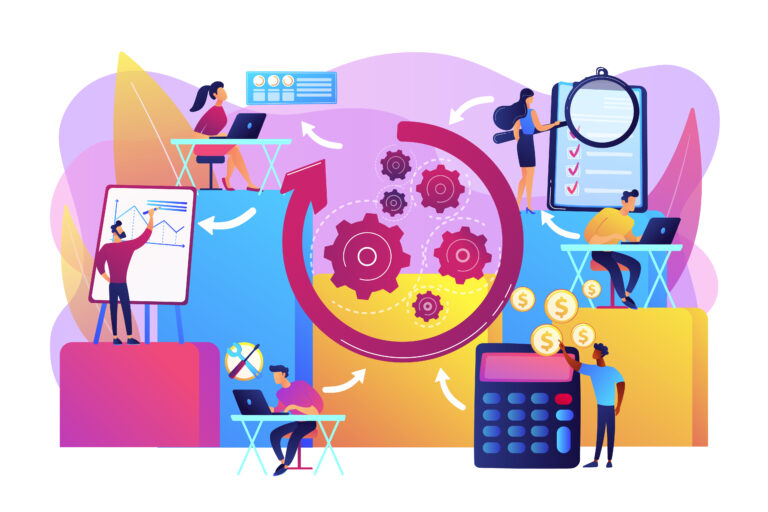A new secret weapon has emerged to make sure you’re squeezing the most out of your hyperautomation initiatives: Hyper-Productivity. Instead of throwing endless darts hoping for an automation win, Hyper-Productivity ensures each shot is targeted.
Using the two together means your automation initiatives focus on collaboration, efficiency, and cost savings, eliminating the time spent on manual processes. A combination of mindsets works. Gartner predicts the strategy can decrease operational costs by 30% for organizations that take the plunge.
What is Hyper-Productivity?
In our personal lives, we’re constantly grappling with time, trying to scrape out a few extra ounces of productivity wherever possible. You might meal-plan at the start of the week, try Pomodoro, or plan to wake up an hour earlier.
Hyper-Productivity asks us to look at automating business processes similarly: how can we better organize all these isolated tasks so they work together more seamlessly?
After all, in business, few tasks work in a vacuum. Hyper-Productivity encourages a broader scope: tuned to find overlaps between tasks and departments—frequently overlooked opportunities for increased collaboration.
Collaboration tools
Disorganized workflows cause unnecessary follow-ups and days-long needle-in-a-haystack hunts for lost information. Hyper-Productivity is all about connection:
- Everyone has the correct information at their fingertips
- Simple views over responsibilities and task progress
- All team members, regardless of technical skill, can pitch in on process-building
- Reduce unwanted changes by limiting edits to authorized users
- Simultaneous editing of documents and process workflows
- A single, up-to-date version of essential documents circulates through automated processes
- Activity tracking so users can follow edits
According to some studies, effective collaboration can boost workplace output by 50%. Collaborative tools ensure your technology is just as much a part of the team.
Workflow optimization
Mapping workflows is two-pronged. It’s not just knowing what tasks to include, but the order of tasks is just as crucial.
As the complexity of your organization grows, it’s easy for workflows to over-bloat. A war cry of Hyper-Productivity is simplicity. Continually closely monitor tasks and how they relate to others to maintain the smoothest possible pathway.
Automation of repetitive tasks
McKinsey estimates that 30% of activities in 60% of jobs can be automated. Repetitive tasks are a prime area for tagging in technology.
Your starting point is data entry tasks, copy-and-paste jobs, and moving information between databases. By clearing the table of mundane tasks that disrupt focus, your team has more energy to apply creativity in areas that matter most.
The strategy does more than save your organization time and costs per task. By slashing routine swivel-chair tasks, you can shift high-performing employees’ focus to more fulfilling work—the Holy Grail of a purposeful job. It’s an unbeatable way to reduce churn and keep top talent around for the long run.
Automation is one arrow in the Hyper-Productivity quiver, but don’t lose sight of manual, people-based tasks. Understanding how people need to communicate, share information, or brainstorm together is just as powerful.
What is hyperautomation?
Hyperautomation uses automated technology to drive collaboration and optimization while ousting repetition, improving efficiency, and increasing productivity. Unsurprisingly, 7 out of 10 business leaders agree that hyperautomation will play an influential role in the future of business. Here’s why organizations are expanding their automation capabilities efforts.
Its tech tools are expected to boost profits by nearly 40% by 2035.
7 out of 10 businesses are already tapping their strengths to automate at least one vital process
Reduce costs, like this oil and gas company, who cut warehousing costs by $1 million through hyperautomation
So, what are the technologies driving unprecedented interest in hyperautomation?
Robotic Process Automation
Robotic Process Automation (RPA) is like having an army of virtual assistants at your beck and call. Shift the responsibility for repetitive and rule-based tasks from humans over to software. Heavy data entry, filling out forms, and populating spreadsheets become something done in the background while staffers can lend their focus elsewhere. RPA bots are obsessed with rules, so any task that comes with a set of step-by-step instructions is their sweet spot.
Instead of copying information from emails into a CRM daily, humans can do what they do best—cultivate relationships with customers and high-profile clients, synthesize unrelated information into brand-new outreach ideas, or solve nuanced problems requiring a kid-glove approach.
Intelligent Document Processing (IDP)
Intelligent document processing is the better alternative to robotic process automation. Instead of being limited to structured data, IDP can accelerate workflow automation by sifting through unstructured data. One of the technologies that makes up IDP is Optical Character Recognition (OCR).
AI and Machine Learning
While RPA loves following strict routines, artificial intelligence and machine learning add a dose of reasoning.
- Machine Learning (ML): In traditional programming, humans write explicit rules for a computer to follow. For example, an RPA bot will move whatever is in an application’s ‘first name’ field to column B on a spreadsheet. However, in machine learning, computers learn from data patterns. ML tools can suss through a broad trove of data to identify patterns, identify anomalies, and make predictions—without being fed overt instructions.
- Artificial Intelligence (AI): AI does more than automate a task; it can improve performance. AI can evaluate a situation—whether it’s customer feedback or the open streets—and identify whether customers were pleased or disappointed and if a perceived obstacle in the road is a person or shadow. Each time it makes a decision, it smartens up, making it a continual learner that can go far beyond rules-based tasks.
- Natural Language Processing (NLP): This technology enhances AI and Machine Learning through its ease of use. The ability to process natural language makes designing processes much easier, streamlining the overall process for business users.
Combined, AI and machine learning not only invite a new breed of insights and opportunities, but they’re helping organizations save time, too. Of IT professionals worldwide, 30% report that the tech is proving itself a champion time-saver.
Integration of technologies
It’s not just plugging every leak with an automated SaaS product. Hyperautomation requires a strategic eye to find the right-match technology for each problem. But success lies in integration: uniting all workflows under one big tent. Like a ringleader, you need to be aware of every process, always looking for ways to improve performance and efficiency.
Key differences between Hyper-Productivity and hyperautomation
Automation is just one method for boosting productivity. However, not all intelligent process automation software is created equal.
Many “if this, then that” routines live in a vacuum. For instance, a sales team might use document automation to populate contracts with customer details—but there’s no task to inform accounting of billing changes. By one estimate, organizations tinker with 200+ apps, many of which are department-specific without broad governance.
Various document versions whirr through separate programs, and redundant tasks run in parallel—all with no single source of truth. Another 60% of employees admit using their preferred apps (ahem, unauthorized by IT) to exchange information and share documents with their colleagues.
Hyper-Productivity requires a willingness to explore new ideas for solving business challenges. But not just as a band-aid to discrete issues. It’s understanding how your entire tech stack works together to form a cohesive strategy.
Combine for a winning automation plan
Half of organizations that report business process automation (BPA) success tend to point to one key factor: coordination across business units. Unfettered automation can cause more problems than it solves—and Hyper-Productivity brings a dash of discipline. Instead of a mad dash to automate, automate, automate, Hyper-Productivity encourages organizations to develop a cohesive plan focused on delivering benefits organization-wide.






